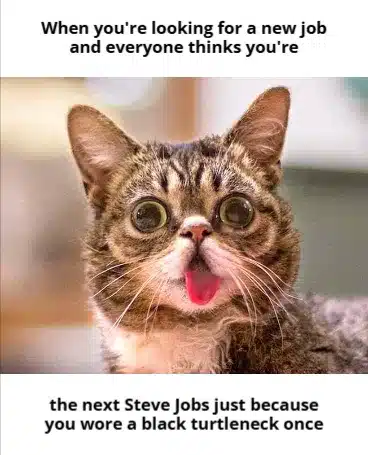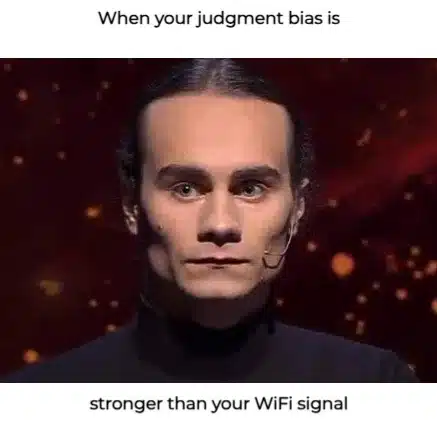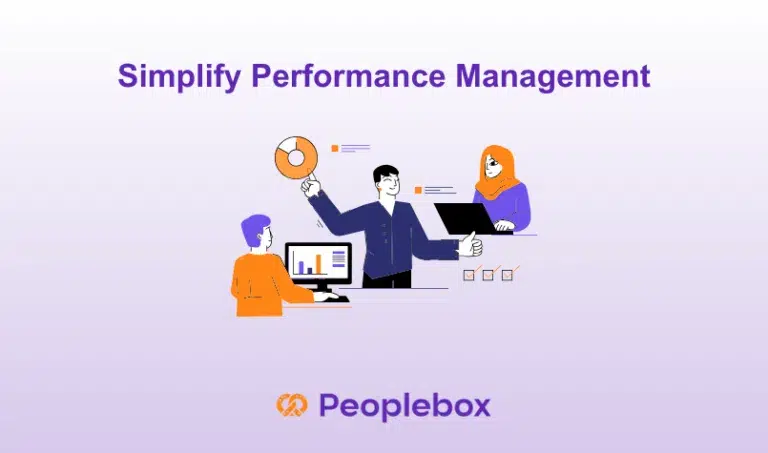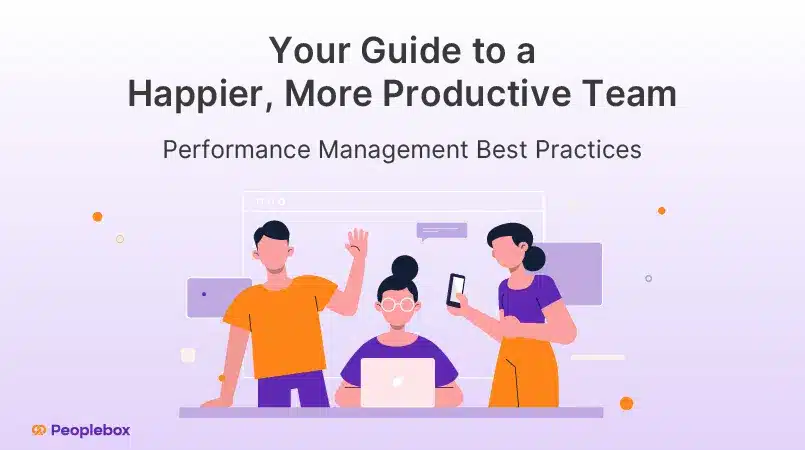In this competitive landscape, a diversely constructed team is the secret to success, and companies with a diverse workforce are more likely to outperform others. However, hiring bias remains a stubborn barrier to reducing hiring bias, where 50% of women and minorities are going to face a reduction in opportunities due to unconscious preferences.
What’s scary is that 75% of hiring managers know they have biases, often unconsciously favoring applicants similar to themselves.
But can’t you just turn the tide? Imagine a hiring process in which every candidate is evaluated solely on his or her abilities and qualifications—no biases, just raw talent. Step forward AI technology — your powerful ally in fighting hiring bias — along with innovative solutions like blind recruitment that can preclude bias from penetrating your hiring strategy and make it a pro-diversity, pro-inclusiveness champion.
Want to transform the way you recruit? Read on to find out how AI can help you transform your hiring process and help tap the full potential of a diverse team.
So let’s get started!
Understanding Hiring Bias
How we think significantly involves a variety of unconscious bias that profoundly determines how we view reality. Ideally, the decisions to hire a candidate should be based solely on their ability to do the job well. Such a hire would then be approached objectively and pragmatically, free of subjectivity and unconscious bias.
But we don’t live in an ideal world and no matter how hard we try sometimes we let the factors around us affect our judgment.
Unfortunately, it’s nowhere more apparent where our unconscious bias plays out than in recruitment; when recruiters are told time and again to ‘trust your gut’ – to rely on and make decisions based on our intuition.
But as you’ll discover later on, intuition is based on, yup, you guessed it, unconscious bias.
Here is a preview of the different types of hiring biases that are common in the workplace.
1. Confirmation Bias — You Want to Believe What You Think
We all judge quickly, but we are all guilty of it; recruiters no less. We make snap judgments based on presumed truths and then go the rest of the time-around subconsciously or not-deleting for reasons why that should not have been the case.
That is when we ask irrelevant questions, trying to coax an answer out to support our presumption about the candidate. We do this because we want to believe that we are right about our instincts and that we’re right in our assessment of him or her.
The obvious danger, of course, is that we might be passing over great candidates for no real reason at all.

2. Affect Heuristics — How they Look is How they Work
This is when the recruiter uses mental shortcuts to come up with a conclusion about a candidate’s ability to perform the job without having made a thorough analysis of all evidence first.
Quite simply, you’re judging someone’s character on superficial things that don’t even influence how they’d accomplish a task.
Like, for instance, if you decide that someone is incompetent because they have visible tattoos, someone who is overweight, and all that nonsense because you do not find that particular trait or facet of their personality acceptable.

3. Halo Effect — First Impression Shapes Perception
This hiring bias is like expectation anchor bias because it occurs when the recruiter forgoes the proper investigation of the background in favor of concentrating too heavily on one positive aspect, like where they went to school or what sports they do, and relies on that one thing when making decisions.
We zero in and let that golden halo lead us and our perception of the candidate. Forsaking all other information about them, we are blinded by this one thing about them, the thing we believe makes them so great.
This knowledge then blinkers the recruiter throughout the recruitment process, as we firmly believe this candidate stands ahead above the rest because of it.

4. Expectation Anchor — ‘My Star Employee from the 80s’
Expectation anchor bias is when we let ourselves anchor onto one certain piece of information about a candidate and use it in order to help us in making decisions.
For example, a good example can be described as when a recruiter refuses to believe that anybody else but a carbon copy of the role’s predecessor can do the job properly.
Thus, discounting most of the candidates in advance because they do not meet the unrealistic expectations of the recruiter.

5. Judgement Bias — Expectation Twist our Judgement
As recruiters, we may spend a great deal of time looking through resumes. Rather than allowing each resume to speak for itself, we might tend to compare the last resume with the one that preceded it.
In doing so, we’re merely shifting the goalposts with each new resume sift. We are then comparing a candidate rather than judging whether they are appropriate for a specific role, based on their skills and attributes as displayed on the resume.

6 Ways of Reducing Hiring Bias with AI
Let’s take a look at 6 ways in which AI can be used to bring down the harm caused due to hiring bias in your team.
1. Screening and Resume Sorting
The very first step of any hiring process involves candidate screening. Traditional processes rely on human recruiters reading resumes and cover letters, an incredibly open invitation to biases.
AI screenings rely on algorithms that analyze candidate profiles for the match against the qualifications of the available opening. AI can engage in conversation via SMS, WhatsApp, and social media, prequalifying candidates much more quickly and efficiently.
🎯Removal of Identifying Information: An AI system can remove identifying information from the resume, such as names, pictures, gender, or race. This ‘blind hiring’ technique eradicates unconscious biases in employment decisions.
🎯Skills-Based Screening: AI-based tools screen candidates based on their skills, job experience, or training and certification and not on factors like college reputation or former employers. AI ensures that bias in screening candidates regarding background, education, etc., is minimized.
🎯Data-Driven Comparisons: AI will compare each resume against the job requirements. The candidates are ranked according to how close they are to meeting those criteria. Therefore, no “gut feelings” and subjective judgments (that usually accompany a process of manual screening) will be present. The process is much more consistent and objective making it easy to eliminate bias from making such comparisons.
🎯Consistency in Screening: AI treats all the applicants equally. As a result, the process is entirely just, equal, and merit-based.
🎯Natural Language Processing (NLP): Advanced AI systems use NLP for resume analysis to look beyond keyword matches to get into the context of experience from the candidate. AI thus can identify transferable skills and potential that may have gone unnoticed and therefore eliminate bias toward those with less conventional career tracks.
| Are you tired of hours spent manually sifting through resumes, worrying about unconscious biases creeping into your hiring decisions? Peoplebox’s AI-powered resume screening will change the way you hire into faster, smarter, and more equitable recruitment. Peoplebox’s advanced AI automatically screens resumes on their skills and qualifications and not by their name, gender, or background. The AI technology scans through resumes for any relevant job criteria and ranks candidates for easy identification of high-potential talent and avoidance of manual bottlenecks in screening processes. Goodbye to bottlenecks in the hiring process from manual screening, and hello data-driven hiring process. Book a demo with us today and supercharge your resume hiring process! |
2. Standardize Interviews
Forbes reveals that to avoid unconscious hiring bias, one has to be disciplined about asking all applicants the same questions as this allows “hiring decision-makers to base decisions on informed comparisons about applicants’ capabilities rather than their first impressions.”.
A standardized format for assessment and interviewing provides each candidate, irrespective of his or her background, with an equal scope in terms of fair competition. In addition, standardized assessments and formats reduce bias and increase overall efficiency in the recruitment process.
By using a one-way interview platform, the interviewers can conduct uniform interviews whereby questions asked to candidates will be the same in order to focus on answers.
Suggested Read: What are the Best Interview Questions to Ask Candidates?
| 💡Pro Tip… The same questions could be in a multiple-choice format question, a text format (or a combination) to help you reduce biases during the initial screening process. Keep the questions as objective as possible. |
Then, skills assessments can be scored by an AI based on standard metrics in multiple media, which would then allow future interviews to be offered purely on scores from tests. And all this happens before any character information about the candidate is known.
After having had the interview, AI analytics would then step in to objectively assess these candidates before coming out with results to be presented to the hiring team for evaluation.
3. Data-Driven Decisions
This is the core objective of AI hiring solutions. Objective and equal recruitment begins by trying to take some of the human factors and bias out of the equation.
Such means that hiring managers can simply rely on facts and intelligent insights.
Now, with so many insights that AI solutions can draw from interviews, skills assessments, and candidate profiles, all this can be done objectively and indicate which of these critical skills are required for those roles.
And this happens at the early stages, ensuring human influence does not creep in too early.
Free HR Reporting Templates
4. Collective and Collaborative Hiring
Heard the phrase… it takes a village?
This one may sound like a no-brainer, but it is so crucial for diverse hiring outcomes. In-person, or virtual, it is always fairer to have a panel of interviewers, ideally from diverse backgrounds themselves.
The power that AI brings to this equation is that collaboration and group assessment can instantly occur with continuous discussion. Virtual interviews allow all interviewers to score and rank candidates simultaneously.
Multiple interviewers from all parts of the business can review the interviews done by the candidates and can join the conversation in the same channel.
It can lead to even more multiple perspectives and analyses by a range of employees.
5. Diversity and Inclusion
For any organization that believes in achieving a diverse workforce, Diversity, Equity, and Inclusion metrics are deeply important. AI would bring DE&I analysis at a level of granularity never possible before, giving an understanding of the diversity composition across the hiring lifecycle of candidates.
Age, race, sex, and so on, will be tracked through AI, which is very important for making informed decisions based on a better understanding of an organization’s diverse landscape.
Ensuring diversity goals without compromising on the quality of hire is what will facilitate using such data-driven approaches.
AI can sense diversity both within and outside of the organization, making targeted interventions that foster inclusiveness possible in departments or locations that seem to lag.
This view, in particular, does not envision superficial aspects of diversity, but rather deeply embedded diversity in the makeup of an organization.
6. Transparency and Accountability
It provides maximum transparency and accountability. All the decisions taken by AI systems can be tracked and audited and will clearly outline a rationale regarding why those candidates were selected or rejected at some point in the selection process.
Also Read: 25 Best Applicant Tracking Systems
This in itself lays down fundamental underpinnings in building trust within the recruitment process, not only within the organization but also with the candidates.
It also allows companies to detect and rectify any kind of biases present in their AI system for continuous improvement in the hiring process.
Best Practices in Using Artificial Intelligence in Hiring
Balancing innovation with ethical considerations with the right intention of ensuring that the process leads to reliable, fair, and unbiased outcomes is essential. Best practices for any field when deploying AI, but specifically in hiring and recruitment, include the following:
Dos:
✅Ensure Transparencies with AI Algorithms. Adopt transparent algorithms so that users may easily interpret what criteria are being set.
✅Ethical Data Collection through the Usage of Diverse and Representative Datasets to Reduce Biases in AI Models
✅Monitor continuously the output of the AI for bias by running continuous audits of AI outputs.
✅Periodically retrain AI models to keep up with changing information and to remain vigilant regarding obsolescence.
✅Provide guidelines for the use of AI, ensuring compliance with laws and regulatory requirements.
Don’ts:
❗Do not make AI your final authority. Al can do things that a human can do faster, but humans have a good deal of common sense and context that is extremely necessary for ethical checks.
❗Do not let AI decide everything. Limit automation to specific tasks. AI can screen resumes or answer basic customer service questions. However, full automation should be avoided.
Conclusion
Bias in hiring is both an ethical and economic imperative. A diverse and inclusive workforce ensures innovation, high productivity, and employee satisfaction. AI recruitment offers a powerful antidote to bias in the hiring process with objective data-based assessments of candidates.
AI screening, skill tests, interviews, and DE&I analysis can all be used together to make hiring practices not only more fair but even more inclusive for everyone.
Hence, it means applying the use of AI to provide standardization, transparency, and accountability to make sure that equal chances of success are available to every one of those candidates entering the workplace in an entirely diverse manner.







